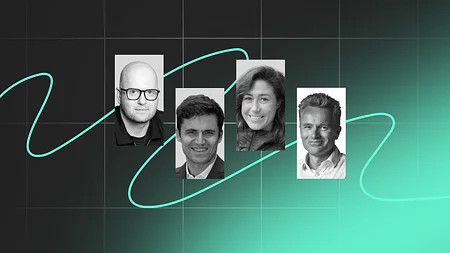The future of wealth is a brand new product approach

There’s something super-interesting about hacking everyday spend. It’s that recurring everyday excuse to nudge customers towards a better future.
A few weeks back I asked “what if buying a coffee helped me plant a tree?”, or “what if every time I bought lunch I saved towards retirement?”. There’s a fundamental trick of psychology here that I think everyone is missing.
Micro-savings like 'rounding up a transaction to the nearest dollar' feel like a gimmick on the surface, but what everyone is missing is they’re the step to link the present, that is RIGHT NOW (friendly), with the future, also known as THE REST OF FOREVER (absolutely terrifying).
Instead of making you sit down and really really think about whether investing is right for you, there’s a recognition that first we just need to get some good financial behaviours in place for most people.
“Wealth” isn’t just for the wealthy
In the West, rents are getting higher, wages aren’t increasing (still) and asset prices continue to grow.
Micro-savings products take a new social norm of stagnating wages and steady inflation and give consumers a way through this to build up enough capital to one day, maybe, possibly, think about investing.
Here’s the trick. By working every day, there are so many touch points and so many opportunities for behavioural finance to guide a user towards a better outcome.
The everyday spend approach
When Tom Blomfield was on Ep 299 of Fintech Insider he noted that everyday spend is the key touch point with customers. If you’re not there, seeing that everyday spend activity, then it’s incredibly hard to build a long-term brand relationship with customers.
This is why the challenger banks focus on having a super-clean transaction log, not because having the log is a 'nice to have', but because it makes a real difference to how people actually feel about their money.
Acorns and Plum, especially to my mind, have really figured out this link between everyday transactions into micro-savings and then investments at a later stage, but guiding you as you learn and grow.
At 11:FS we talk to our clients about the difference between 'products' (e.g. I get a current account, I get a loan) vs 'services' (e.g. managing my everyday spend, identify opportunities to save money etc). What I like about all of these is they lean towards being a service, where the everyday spend is a gateway to the full-service offering.
If you think in products then 'micro-savings' or everyday spend challenger banks like Monzo (where they often act as a shadow to the main salary account) are not that revolutionary.
If you think in services then 'micro-savings' or apps and banks focused on everyday spend are in absolutely the right place to have the customer interactions and data to be able to create the sort of service that customers will love.
If you focus on the commodity product, you end up competing on price. If you focus on digital service, you compete on experience. The difference between 'fast follower adds a feature and nobody uses it' and 'thing customers love about a challenger' is that focus. Focusing on service also dramatically impacts your business model and roadmap.
If my vision is that you have a product with features, I price for the product (e.g. a loan, a mortgage, a fund). If my vision is that you have a service, I might start somewhere that doesn’t make sense as a product (e.g. micro-savings) but have a clear vision of how the service fits together end-to-end.
What about “Execution Only?”
It’s true there’s a major trend towards 'execution only' services like Robinhood or Freetrade. What’s interesting about these is they tend to have disrupted the business model (and as we often say - if you’re not disrupting the business model, you’re not really disrupting).
They have been able to get to the 'everyday' by making buying and selling something that is surrounded by community, that feels inclusive and immediate. It’s another way to start small with a customer, and grow that relationship into a service vs starting with a big product sale.
What can we learn?
Over previous blog posts, I talked about how being mobile-first is critical, and that changing the business model is key. If you combine those with this services approach to building customer propositions, you’ve got an interesting starting place.
The big take-away is we’ve seen a lot of high street banks recently 'launch a robo' / online wealth platform as table stakes in reaction to the robo-advisors of the past decade. It’s just like the classic Wayne Gretzky (famous ice hockey player) quote: “Skate to where the puck is going, not where it has been.”.
In other words, in this market where fintech investments are reaching all-time highs, simply copying what the challengers did 5 years ago and hoping your brand will carry you with a fast follower strategy isn’t working. It doesn’t deliver on the business case, and it’s missing a huge opportunity to change people’s lives for the better.



